To be in compliance means to be conforming to a specific set of regulations, standards, policies or laws. Many countries worldwide have specific laws or regulations which are imposed to companies and organizations which they have to follow in order to satisfy specific standards or rules – to be and remain in compliance. Organizations that use SQL Server databases to store customer data and other information abide to the compliance requirements. Additionally, even those organizations that are not subject to compliance regulations or laws need to fulfill their own organization policies, hence they tend to introduce their own compliance regulative.
May 12, 2016SQL Server compliance auditing for Title 21 Code of Federal Regulations Part 11 requirements – Part 2
Part 1 of this article explains and provides instructions on how to properly set ApexSQL Audit in order to cover implementation of the Subpart B § 11.10 (a), § 11.10 (b) and § 11.10 (c) requirements of the Title 21 CFR Part 11 FDA’s compliance regulations. In this part, the rest of the Title 21 CFR Part 11 Subpart B will be presented and processed in form that will help ApexSQL Audit users easy setup of ApexSQL Audit for each specific requirement, with a short explanation of each requirement itself as well as what particularly ApexSQL Audit can cover and how
February 25, 2016SQL Server compliance auditing for Title 21 Code of Federal Regulations Part 11 requirements – Part 1
Title 21 Code of Federal Regulations Part 11 (in the rest of the text it will be referred to as Title 21 CFR Part 11) is part of the Code of Federal Regulations established by the United States Food and Drug Administration (FDA) as a set of regulations on electronic records and electronic signatures (ERES). The CFR Part 11 specifically defines the standards that have to be imposed in order to consider electronic records and electronic signatures as trustworthy, reliable, and equivalent to paper records
February 25, 2016SQL Server before and after auditing of DML/data changes
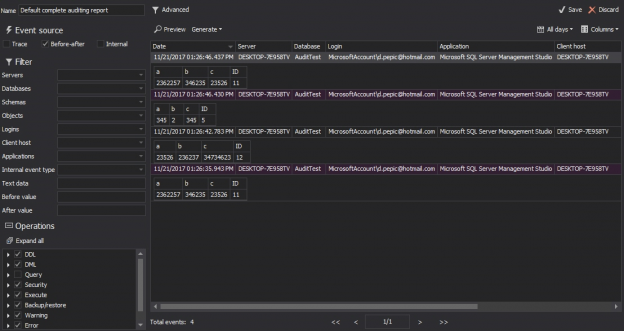
Before and after auditing tracks changes to data, showing the old and new values after each change. This data can be re-constructed to show an entire history of row changes and is important for forensic auditing in the case of malicious or inadvertent data changes.
February 25, 2016How to implement compliance with the PCI DSS regulatory standard for SQL Server – Part 4
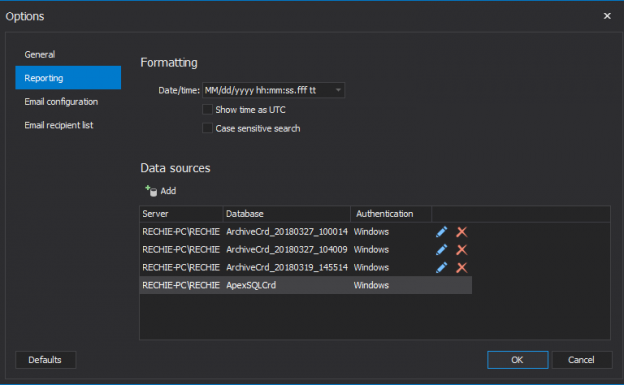
In part 1 and part 2 of this series information was provided on how to configure ApexSQL Audit to accomplish PCI requirements from 3 and up to 8, while in part 3 the addressing requirements 10.1, 10.2 and 10.3 of the PCI DSS 3.1 standard via ApexSQL Audit was explained
In this part, the rest of the PCI DSS 10-Track and monitor all access to network resources and cardholder requirements section will be described and as well as some requirements from section 12 that can be met using the ApexSQL Audit. This article is based on the latest PCI DSS 3.1 compliance regulation
January 22, 2016How to implement compliance with the PCI DSS regulatory standard for SQL Server – Part 3
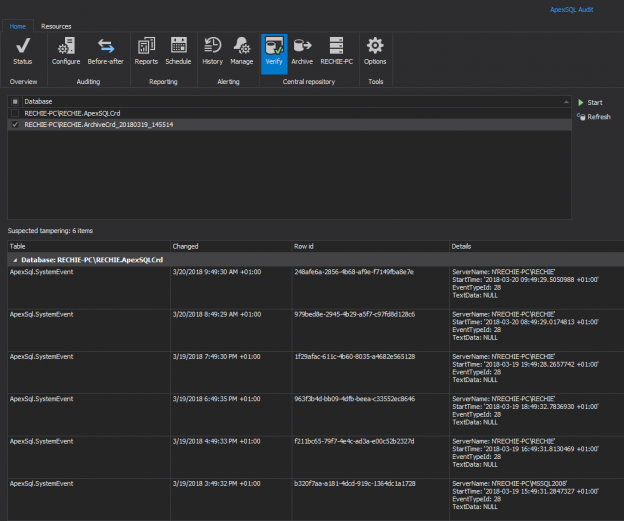
Part 1 and part 2 of this article described configuring ApexSQL Audit to meet PCI DSS 3.1 standard developed to ensure security of cardholders’ payments and data. In this part, the requirement sections 10-Track and monitor all access to network resources and cardholder will be described. For more details about differences between PCI DSS 2.0 and PCI DWW 3.0 and differences between PCI DSS 3.0 and PCI DSS 3.1, check the official PCI Security Standards Council LLC documents Summary of Changes from PCI DSS Version 2.0 to 3.0 and Summary of changes from PCI DSS Version 3.0 to 3.1
January 6, 2016How to implement compliance with the PCI DSS regulatory standard for SQL Server – Part 2
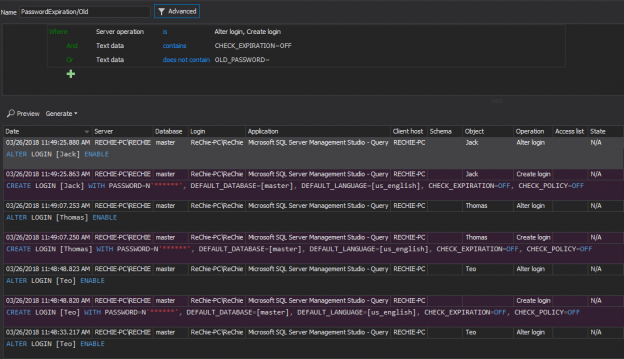
Part 1 of this article described configuring ApexSQL Audit to meet PCI DSS standards that developed to accomplish and to enhance security of payment card data. In this part, the requirement sections 7-Restrict access to cardholder data by business need to know and 8-Identify and authenticate access to system components will be described.
December 14, 2015How to implement compliance with the PCI DSS regulatory standard for SQL Server – Part 1
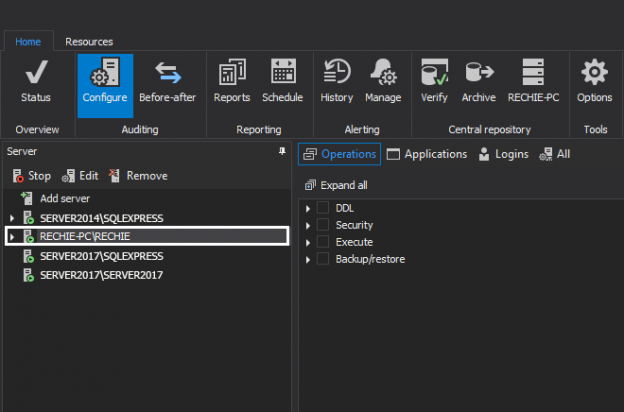
The PCI DSS (Payment Card Industry Data Security Standard) is a multidimensional security standard designed as a set of technical and operational requirements to protect data of credit card holders. The PCI DSS applies to all entities that store, process or transmit cardholder data, including software developers of applications and devices manufacturers when used in those transactions
This standard originated in 2005 and was created by the PCI SSC (Payment Card Industry Security Standards Council) organization. The PCI SSC organization is founded by American Express, Discover Financial Services, JCB International, MasterCard Worldwide, and Visa, Inc., with a goal to improve security of payment account data via the PCI Security Standards
December 11, 2015How to implement HIPAA regulatory standard for SQL Server – Part 3
Part 1 of this series shows how ApexSQL Audit should be set up for implementing the Administrative safeguards section of the HIPAA compliance (CFR 45 Part 164, Subpart C – Security Standards for the Protection of Electronic Protected Health Information developed to undertake protection of EPHI). In Part 2, the ApexSQL setup for fulfilling the remaining parts of the Administrative safeguards are discussed.
September 22, 2015How to implement HIPAA regulatory standard for SQL Server – Part 2
In Part 1 of this article it was presented how to set up ApexSQL Audit to implement Administrative safeguards standards of the HIPAA regulatory (the 45 CFR Part 164, Subpart C – Security Standards for the Protection of Electronic Protected Health Information that is developed to accomplish protection of electronic protected health information (EPHI)). In this part, the rest of the Administrative safeguards will be presented, while in the Part 3 we will provide ApexSQL Audit settings which will allow you to fulfill the HIPAA’s Technical safeguards and Policies and procedures and documentation requirements sections
September 14, 2015How to implement HIPAA regulatory standard for SQL Server – Part 1
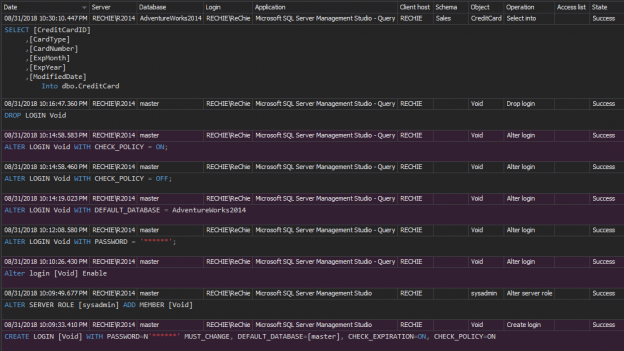
The Health Insurance Portability and Accountability Act of 1996 (HIPAA) sets guidelines mandating the adoption of Federal privacy protections for health information of individuals which gives patients an array of rights with respect to that information. The HIPAA Privacy Rule ensures federal protections for individually identifiable health information and gives patients a range of rights with respect to that information. The Security Rule defines administrative, physical and technical safety measures to ensure the availability, confidentiality and integrity of electronic protected health information.
August 31, 2015Before and after auditing in SQL Server
Simply archiving information to audit a database is one thing, but successfully reconstructing an audit history to provide meaningful forensic data is another. It is important to be able to see a full history of user changes, as well as to be able to reverse changes that may have been accidental or malicious.
Ideally, such value-added information can be obtained without requiring a prodigious amount of archived data or creating significant performance impact on audited servers.
In this article, we are going to present two different approaches and solutions to before and after auditing.
August 11, 2015SQL Server database security auditing
The following auditing implementations are recommended on a database level as part of any database security auditing system:
- Schema level auditing:
- DDL activity
- Changes made to stored procedures and triggers
- Changes to privileges, users, and security attributes
How to implement SOX compliance requirements for SQL Server – Part 2
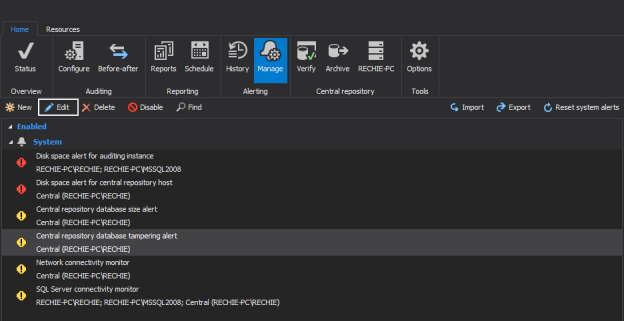
The first part of the article provides a common application settings information and described how to meet the COBIT 4.1’s PO2.4 – Integrity management control objective requirements.
This sequel will describe recommended settings of the ApexSQL Audit that helps meeting the COBIT 4.1 control objectives:
July 28, 2015How to implement SOX compliance requirements for SQL Server – Part 1
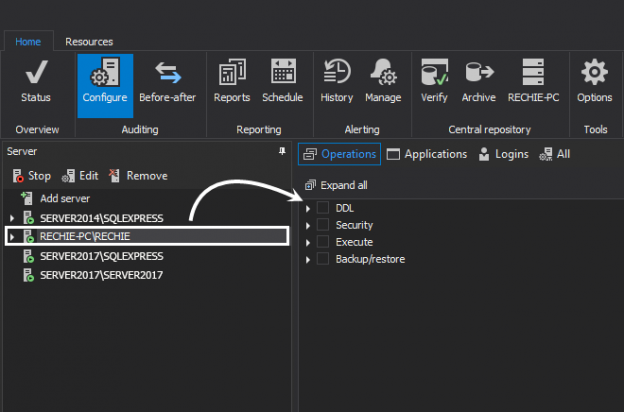
Achieving SOX compliance requirements is the mandatory for all publicly traded companies. But when it comes to most IT teams, SOX compliance can be quite vague and confusing. SOX compliance is not written with technology mandate in mind, but rather a mandate for accounting, legal, and financial reporting. In the SOX Act there’s no reference can be found to anything specific related to IT. It is often said that SOX was “written by lawyers, for lawyers”
July 23, 2015SQL Server auditing – how to be alerted about important auditing events
While numerous native auditing methods are available for SQL Server, none of them provides an out-of-the-box feature to generate an alert when a specific SQL Server event is detected. We will look to see how to come close with native solutions and also an out of the box solution, ApexSQL Audit
May 29, 2015How to ensure continuous auditing of SQL Server with zero audited data loss
An optimal continuous SQL Server auditing approach must include:
- Continuous auditing
- Real time data collection
- Ability to generate meaningful reports
- Alerting on unwanted activities
- Tamper proof store of audit data
In many cases, the primary requirement that must be fulfilled is that auditing must be performed with zero auditing data lost.
April 28, 2015Tracking SQL Server object usage
There is a number of object types in SQL Server database system. Each has its own purpose and role in proper data management. However, sometimes it is required to check how some of them are used.
February 19, 2014Security and compliance in SQL Server
The primary purpose of any database management system is to store and provide accurate information as requested by other software clients. Security of the database system and the information it keeps is another crucial component. There are many aspects of SQL Server security configuration, such as authentication, server and database roles, ownership, or Common Language Runtime (CLR) integration. However, in this article, we’ll focus on those that are related to (and common for) most of compliance regulations.
February 7, 2014Auditing security changes in SQL Server
When it comes to SQL Server security, it’s important to note that there are server and database security levels. All work done by a user is performed on a database, but in order to access the database and do the work, the user first needs to access the server, and afterwards the database – the server security level affects the database security level
February 6, 2014








